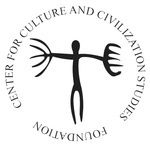Վարձկանության կերպափոխումները ծագումից` մեր օրեր
##semicolon##
https://doi.org/10.56673/18294502-%2022.15-31##article.abstract##
Հոդվածի հիմնական նպատակն է պատմական զարգացման համատեքստում ներկայացնել «վարձկանություն» երևույթը և ցույց
տալ, թե ինչպես է վարձկանության էությունը և դրա ընկալումը ժամանակի ընթացքում փոփոխվում։ Հոդվածում մասնավորապես
նշվում է, որ վարձկանությունը սկիզբ է առել դեռևս հին ժամանակներում և մեր օրեր է հասել որոշակի
փոխակերպումներով։ Դարեր շարունակ այն ծառայել է կոնկրետ խնդիրների լուծմանը և համարվել է ոչ միայն բնական, այլ հաճախ՝
պատվաբեր գործունեություն: Հոդվածում անդրադարձ է կատարվում պատմության տարբեր շրջափուլերում վարձկանության առանձնահատկություններին, հավաքագրման եղանակների փոփոխությանը, քննվում է վարձկանների և վարձողների գործողությունների օրինականությունը:
Հետազոտությունը ուսումնասիրում է նաև հասարակությունների հասունացման արդյունքում վարձկանություն երևույթի նկատմամբ
վերաբերմունքի փոփոխությունը, երևույթը դատապարտող միջազգային օրենքների շրջանակը և դրանց վերանայման անհրաժեշտությունը:
##submission.citations##
UN Human Rights Office of the High Commissioner, “International Convention against the Recruitment, Use, Financing and Training of Mercenaries”, adopted 04 December 1989 by General Assembly resolution 44/34, https://www.ohchr.org/en/instruments-mechanisms/instruments/international-convention-against-recruitment-use-financing-and.
Andrew Alexandra, “Mercenaries”, G. Martel (ed.) Encyclopedia of War, 2011, https://www.academia.edu/6124276/Mercenaries.
Debora Avant, “Mercenaries”, Wiley-Blackwell Encyclopedia of Globalization, 20-28, https://www.academia.edu/2870726/Mercenaries.
Sean McFate, “Mercenaries and War: Understanding Private Armies Today”, National Defense University Press, February 7, 2018, 61, https://ndupress.ndu.edu/Media/News/Article/2031922/mercenaries-and-war-understanding-private-armies-today/.
Stephen Morillo, “Mercenaries, Mamluks and Militia: Towards a Cross-Cultural Typology of Military Service”, Medieval Mercenaries (Brill: Leiden, 2007), 243-260. https://www.academia.edu/449307/Mercenaries_Mamluks_and_Militia_Towards_a_Cross_Cultural_Typology_of_Military_Service.
Դավիթ Հովհաննիսյան, «Տարածաշրջանային զարգացումներ. Երեք ծովերի տեսություն», Վերլուծական տեղեկագիր 9, (2016), 8-36:
Դավիթ Հովհաննիսյան, «Երեք ծովերի համակարգ», Կոնֆլիկտների տրանսֆորմացիայի դպրոց, հոկտեմբերի 31, 2015 թ․, https://www.youtube.com/watch?v=cKhHTAMlE34 , (հասանելի է 11.12.2022),
Davit Hovhannisyan., “Regional Security Concepts in the “Three Seas System””, Analytical Bulletin 11, (2017) Regional and National Security Dynamics,14-17.
“Libya: Violations related to mercenary activities must be investigated”, UN experts, accessed 11.12.2022,https://www.ohchr.org/en/news/2020/06/libya-violations-related-mercenary-activities-must-be-investigated-un-experts?LangID=E&NewsID=25970
“Private sources … Starting transfer of 1st batch of Syrian mercenaries to Azerbaijan”, Syrian Observatory for Human Rights, accessed 11.12.2022, Lindsey Snell, “From Hamza Division source. Supposedly these Hamza men arrived in Baku today via Ankara.”, Twitter, 22 September 2020, https://twitter.com/LindseySnell/status/1308489785493852160, “Mercenaries in and around the Nagorno-Karabakh conflict zone must be withdrawn”, UN experts, accessed 09.12.2022, https://www.ohchr.org/en/press-releases/2020/11/mercenaries-and-around-nagorno-karabakh-conflict-zone-must-be-withdrawn-un.
Mona Issa, "Mercenaries in Yemen: Nationalities, numbers & horrors”, Al Mayadeen, 29 March 2022, https://english.almayadeen.net/news/politics/mercenaries-in-yemen:-nationalities-numbers-horrors.
“Over 40,000 Syrians reportedly register to fight for Russia in Ukraine”, Syrian Observatory for Human Rights, accessed 06.12.2022, https://www.syriahr.com/en/243241/.
Ed Butler, “The Syrian mercenaries used as 'cannon fodder' in Nagorno-Karabakh”, BBC, 10 December 2020, https://www.bbc.com/news/stories-55238803։
Protocol Additional to the Geneva Conventions of 12 August 1949, and relating to the Protection of Victims of International Armed Conflicts (Protocol I), 8 June 1977, https://ihl-databases.icrc.org/applic/ihl/ihl.nsf/INTRO/470.
UN Human Rights Office of the High Commissioner, “International Convention against the Recruitment, Use, Financing and Training of Mercenaries”, adopted 04 December 1989 by General Assembly resolution 44/34, https://www.ohchr.org/en/instruments-mechanisms/instruments/international-convention-against-recruitment-use-financing-and.
Organization of African Unity Convention for the Elimination of Mercenarism in Africa. Concluded at Libreville, Gabon, on 3 July 1977, https://treaties.un.org/doc/publication/unts/volume%201490/volume-1490-i-25573-english.pdf.
UN Human Rights Office of the High Commissioner, “International Convention against the Recruitment, Use, Financing and Training of Mercenaries”, adopted 04 December 1989 by General Assembly resolution 44/34, https://www.ohchr.org/en/instruments-mechanisms/instruments/international-convention-against-recruitment-use-financing-and.
“The impact of Mercenary Activities on the Right of Peoples to Self-determination”, Fact Sheet No. 28, https://www.ohchr.org/sites/default/files/Documents/Publications/FactSheet28en.pdf, part 5.
Sean McFate, “Mercenaries and War: Understanding Private Armies Today”, National Defense University Press, February 7, 2018, 61, https://ndupress.ndu.edu/Media/News/Article/2031922/mercenaries-and-war-understanding-private-armies-today/.
Anthony Spalinger, War in Ancient Egypt, (Malden, MA: Blackwell Publishing, 2005), 6-8.
Քսենոֆոն, Անաբասիս, թարգմ․ Ս․Կրկաշարյանի, (Երևան, 1970)։
Philippe Contamine, War in the Middle Ages, (New York: 2013), 141-144.
War in the Middle Ages, (New York: 2013).
John Keegan, A History of Warfare․ (New York, 1993), 231.
Stephen Morillo, “Mercenaries, Mamluks and Militia: Towards a Cross-Cultural Typology of Military Service”, Medieval Mercenaries (2007), 243-260. https://www.academia.edu/449307/Mercenaries_Mamluks_and_Militia_Towards_a_Cross_Cultural_Typology_of_Military_Service:
Jeffry Pickering, Emizet Kisangani, “Political, Economic, and Social Consequences of Foreign Military Intervention”, Political Research Quarterly Vol. 59, No. 3 (Sep., 2006), 363-376. https://www.jstor.org/stable/4148037?searchText=bob%20denard&searchUri=%2Faction%2FdoBasicSearch%3FQuery%3Dbob%2Bdenard&ab_segments=0%2FSYC-6704_basic_search%2Fcontrol&refreqid=fastly-ԱՄdefault%3A5df9a74a3afbd2892f46987b333fd640
Anna Leander, “The Paradoxical Impunity of Private Military Companies: Authority and the Limits to Legal Accountability”, Security Dialogue 41(2010), 467–490. Линдсей Камерон, “Частные военные компании: их статус по международному гуманитарному праву и воздействие МГП на регулирование их деятельности”, Международный журнал Красного креста. Том 88. № 863, (2006). Lindy Heinecken, “Outsourcing Public Security: The Unforeseen Consequences for the Military Profession”, Armed Forces & Society. 40 (2014), 625–646.
Charles Moskos, “From Institution to Occupation: Trends in Military Organization”, Armed Forces & Society, Vol. 4. (1), (1977), 41–50.
Vladimir Ryzhov, “David Stirling, Special Air Service and PMC Watchguard International”, Top War, https://en.topwar.ru/172493-djevid-stirling-special-air-service-i-chvk-watchguard-international.html.
Эмиль Сайфуллин, “ЧВОК — приватизация войны или инструмент государства?”, Российский совет по международным делам, https://russiancouncil.ru/analytics-and-comments/analytics/chvok-privatizatsiya-voyny-ili-instrument-gosudarstva/.
##submission.downloads##
##submissions.published##
##submission.howToCite##
##issue.issue##
##section.section##
##submission.license##
##submission.copyrightStatement##
##submission.license.cc.by-nc4.footer##








